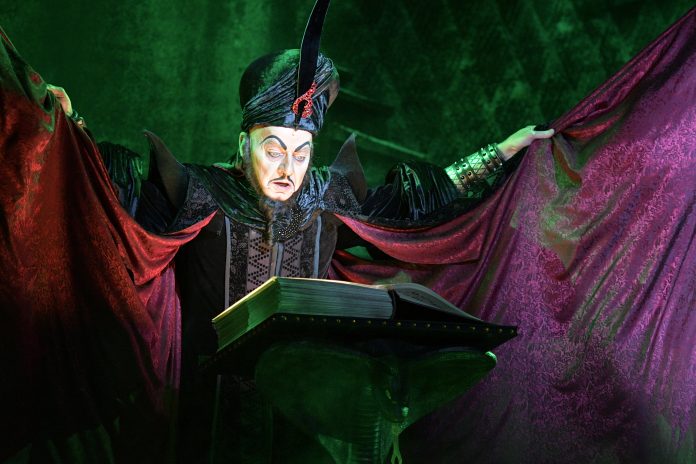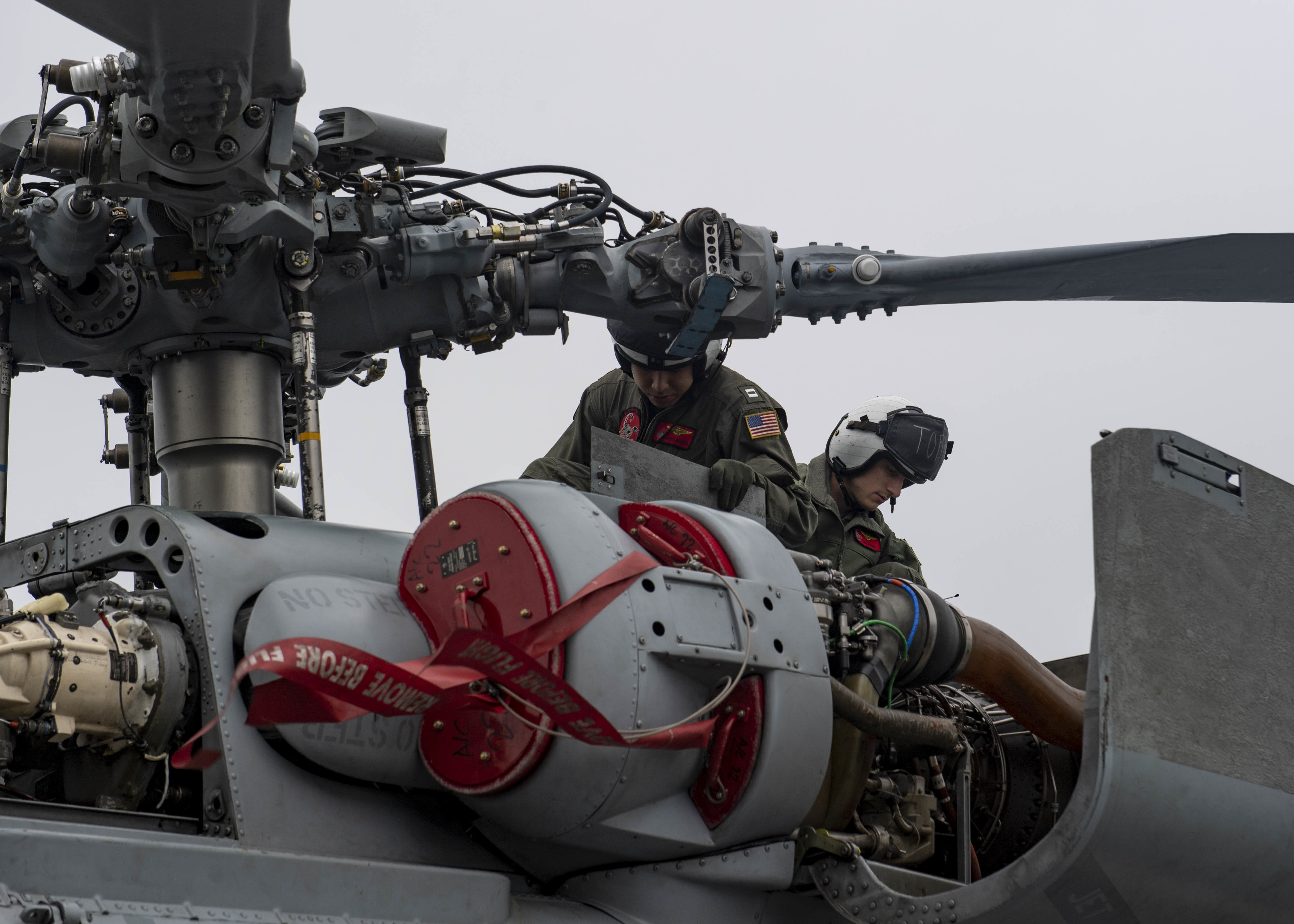
By Lynda Lacayo

Hey Mr. Genie, how about flying audiences on your magic carpet to the Segerstrom Center for the Arts where “Aladdin” the music is playing March 6-23?
Once upon a time an “A” ride ticket symbolized the creme de la creme of the Magic Kingdom. Disney’s animated films have ventured onto Broadway and now its newest blockbuster musical, “Aladdin,” is off on an “A” ticket tour as Disney waves the magic wand and abracadabra, behold an enchanting tale of Arabian nights, young lovers and dastardly doings that is an elaborate feast for the eyes and ears. This is a Disney production so expect great music, extravagant sets, gorgeous costumes, captivating choreography and, always a bonus, plenty of humor. Add in a talented cast and energetic ensemble and call it sensational.
Among the first-rate leads is Jonathan Weir, who plays the evil Jafar. This is not Weir’s first ride on the Disney train. He ruled as Scar in “The Lion King.”
He says, “Some might associate the villain with me. I could title my memoir ‘From Scar to Jafar,’ but I actually appreciate and have enjoyed playing a wide scope of characters in my career.”
Weir admits that being a part of “Aladdin” was particularly appealing because it is a Disney production.
He says, “Disney is a world class operation, always elaborate, always spectacular. Our touring show is the equal of what Broadway audiences have been seeing. It’s a fully realized production with all the magic, sparkle and wonder of a great creative team at the top of their game. Everything from Alan Menken’s music to Greg Barnes’ costumes to Casey Nichclaw’s direction and choreography is well thought out, good entertainment. They just do it right.”
Audiences, especially millennials, will be familiar with “Aladdin,” the classic story, set in the Arabian city of Agrabah, about a poor youth who is granted three wishes by a genie in a lamp which he uses to win a princess and to thwart the sultan’s evil vizier, Jafar.
Jafar is just about as wicked as it gets as is his henchman Iago, who in the animated version is a dirty bird morphed into a horrid human being on stage. This, incidentally, opens up the stage adaptation for new songs and is one of the differences between the film and the musical.
Jafar is the villain of the plot and that’s fine with Weir, who likes playing characters with strong points of view, saying, “It’s good to be bad!” He continues, “Villains don’t think they’re doing anything bad. They think they’re doing the best thing possible, albeit for themselves. So it’s fun to play the cunning, sly and powerful antagonist who clearly gives an entirely different perspective to the story. Jafar has a singular goal, absolute power and this leads to his downfall.”
Playing Jafar does have its challenges, admits Weir. For example, the elaborate makeup takes about 40 minutes to apply and his extravagant costume, while stunning, weighs in at 20 to 25 pounds. That’s a lot of fabric to be hauling around night after night. Weir says another of the hurdles he faced in his interpretation of Jafar is “Jonathan Freeman, who originated the role, has a distinctive voice. So when I was recreating my Jafar, I knew a lot of the architecture, the image that people have of the character with his rich, deep voice. As a result my voice has dropped. The voice is a muscle; it stretches; it transforms, so it has definitely gotten lower. Yeah, it’s a challenging role but Jafar is a great character to play because he’s an iconic Disney villain and he’s so richly drawn.”
There are a few other differences between the movie and what audiences see on stage. As noted above, Iago is no longer an animal and neither is Abu, the monkey who represented Aladdin’s three best friends.
As Weir explains it, “Originally, in the interest of time, the friends were put in the trunk. When the musical was adapted to the stage, the script writers brought out the boys because they had all these great songs for them. In many ways, audiences are getting the intended version of the animated feature.”
Weir continues, “What stays the same is the carpet flies, there’s magic, fireworks, dazzle and bling onstage. Especially spectacular are the 350-plus costumes. In the dreamlike Prince Ali number there are 100 costume changes in less than a minute. So yeah, the show is spellbindingly brilliant.”
The moment in the show that resonates with Weir is the opening number, “Arabian Nights,” which he says “is the only time the entire company is onstage together. I like it that we are all there, singing to the audience as the characters are introduced by the narrator. It’s a cool moment, all of us being together.”
Weir may savor the opening number and the creatively-staged, swashbuckling “High Adventure” is his favorite song.
However, the song/dance scene he watches from the wing is at the end of Act 1, when the genie explains to Aladdin about the three wishes.
Weir says, “Genie, Aladdin and the ensemble perform for about 13 minutes comprised of two songs. The ensemble just blasts their way through the two and one half show with high spirits. The ensemble is the real engine of the show and that Act 1 finish is a powerhouse number, my favorite.”
“Aladdin” is a show that can be enjoyed by all ages. As Weir says, “It’s got comedy that’s funny to kids and sophisticated humor that’s appealing to young couples. It has an adult theme about a young man wanting to make his departed mother proud and about a young couple falling in love. Most importantly its theme deals with coming of age and realizing truth, honesty and being real are what is important.”
Weir is excited to sprinkle some of Disney’s magic dust on audiences at the Segerstrom Center for the Arts. “Aladdin” will be playing at Segerstrom Hall, March 6-23. For tickets and information: online, SCFTA.org; phone 714-556-2787; The Box Office, 600 Town Center Dr. in Costa Mesa. Hours are 10 a.m.-6 p.m. daily.








